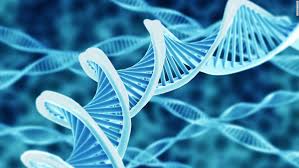 EHV-1 is a DNA virus that commonly causes upper respiratory infection and can lead to more serious neurologic symptoms. This disease is nothing new, but awareness of the disease has increased due to its transmission on the horse show circuit.
EHV-1 is a DNA virus that commonly causes upper respiratory infection and can lead to more serious neurologic symptoms. This disease is nothing new, but awareness of the disease has increased due to its transmission on the horse show circuit.
EHV-1 is spread through horse-to-horse contact, contaminated tack, equipment, and even human hands. Incubation time is usually between 3 and 8 days, but can be as short at 24 hours. The neurologic signs do not usually occur until 8-12 days after the first fever. Shedding by the respiratory route typically lasts for 7-10 days, but can persist for an extended amount of time. A 28-day isolation period is recommended after diagnosis.
EHV-1 Symptoms & Diagnosis
The respiratory form of this disease is exhibited through fever, depression, nasal discharge and inappetance while the neurological form will cause weakness and paralysis of the hind limbs that result in incoordination, bladder atony and inability to rise from the ‘dog sitting’ stance.
The disease is diagnosed by virus isolation and typing, or a polymerase chain reaction (PCR) test. Identifying the genetic mutation that leads to neurological infection is the key differentiator between this strain and Rhinopheumonitis. Early diagnosis plays a vital role in preventing the spread of the disease. Horses exhibiting signs of a fever or nasal discharge should be evaluated by a vet as soon as possible.
EHV-1 Treatment
While there is no approved antiviral treatment for EHV-1, supportive care should be administered to horses exhibiting the neurological signs of the disease. This includes anti-inflammatory drugs and fluids to minimize discomfort and further injury that can result from horse recumbence.
EHV-1 Prevention
The most effective prevention technique is biosecurity as EHV-1 is primarily spread via respiratory secretions. Remember that when entering your horse into a new environment you are exposing your horse to all of the diseases that the previous occupant may have shed.
Best practices to prevent infection include:
- Thoroughly cleaning and disinfect your horse’s stall
- Not allowing your horse to drink from communal water tanks
- Avoiding nose-to-nose contact with other horses
- Keeping new additions to the herd in isolation for 30 days
Though the EHV-1 virus can remain viable in the environment for weeks after being shed, it can easily be killed by disinfectants such as bleach. As with any infection disease, it is very important to always maintain good biosecurity habits.
If your horse is exhibiting symptoms of EHV-1, contact your veterinarian immediately. Mid-Rivers Equine Centre is available 24/7 for emergency care. Call (636) 332-5373.